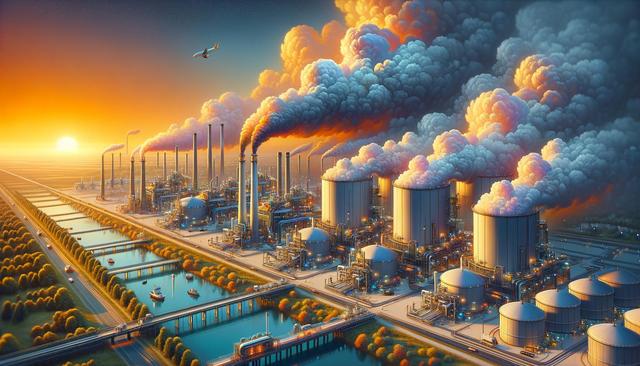Understanding Carbon Capture Technology
Carbon capture equipment plays a critical role in reducing industrial emissions by capturing carbon dioxide (CO₂) before it enters the atmosphere. This technology can be deployed at various emission points, such as power plants, cement factories, and chemical processing units. There are three primary methods of capturing CO₂: pre-combustion, post-combustion, and oxy-fuel combustion. Each approach offers distinct benefits depending on the type of industrial process and the existing infrastructure.
Post-combustion capture is the most widely used, especially in retrofitting existing facilities. It involves removing CO₂ from flue gases after fossil fuels are burned. Pre-combustion methods, on the other hand, convert fuel into a mixture of hydrogen and CO₂ before combustion, capturing carbon at a higher concentration. Oxy-fuel combustion burns fuel in pure oxygen instead of air, resulting in a flue gas that is mostly CO₂ and water vapor, making separation more straightforward. These technologies form the foundation of carbon capture equipment, which is rapidly evolving as demand for emission reduction solutions rises.
Manufacturers at the Forefront of Innovation
Leading manufacturers in the carbon capture space are driving innovation through engineering advancements and scalable system designs. These companies are focusing on creating modular equipment, which allows for easier installation and integration into existing industrial operations. The emphasis on modularity helps reduce costs and downtime, making adoption more attractive for facility operators.
Some distinguishing features of today’s carbon capture equipment include:
- High-efficiency solvents and sorbents that improve CO₂ capture rates
- Automated control systems for optimized performance
- Compact design for flexible deployment in constrained spaces
- Energy-saving components that reduce the operational footprint
Manufacturers are also investing in research and development to enhance the durability and lifespan of their equipment. This includes materials engineering to resist corrosion and thermal degradation, which are common challenges in carbon capture environments. By focusing on these aspects, manufacturers are not only improving performance but also ensuring long-term sustainability of the solutions they provide.
Scalability for Industrial Applications
One of the key challenges in the deployment of carbon capture technology is scalability. Manufacturers are addressing this by designing equipment that can operate effectively across a range of plant sizes and types. Whether it’s a small-scale pilot project or a full-scale industrial facility, adaptability is essential for widespread implementation.
Scalable carbon capture equipment typically includes:
- Modular skid-mounted units for easy transportation and setup
- Customizable configurations to suit different emission profiles
- Integration options with existing emission control systems
This flexibility allows industries in various sectors—such as energy, manufacturing, and waste management—to adopt carbon capture equipment without overhauling their operations. Additionally, manufacturers are working closely with clients to provide tailored solutions that meet specific regulatory and environmental goals. This client-focused approach significantly enhances the viability and effectiveness of emission reduction strategies.
Global Expansion and Market Trends
The global carbon capture market is experiencing significant growth, driven by climate policies, government incentives, and increasing corporate responsibility. Manufacturers are expanding their reach by forming strategic partnerships and establishing facilities in emerging markets. These collaborations often include research institutions and government agencies, which help accelerate technology deployment and standardization.
Several notable trends are emerging in the market:
- Increased investment in carbon capture pilot projects across Asia and the Middle East
- Growing demand for direct air capture (DAC) systems in addition to point-source capture
- Development of transport and storage infrastructure to support captured CO₂
- Rising interest in utilization of captured CO₂ for commercial products
Manufacturers are responding to these trends with versatile product lines that cater to different regional needs. These efforts not only contribute to emission reduction but also open new economic opportunities through carbon utilization and storage industries.
Challenges and the Path Forward
Despite advancements, carbon capture equipment still faces several challenges. High initial costs, energy requirements for operation, and infrastructure limitations can hinder widespread adoption. Manufacturers are actively addressing these concerns by developing more efficient systems and exploring alternative energy sources to power the equipment.
To further enhance the adoption of carbon capture technology, manufacturers are:
- Participating in policy advocacy to support favorable regulations
- Engaging in educational initiatives to raise awareness about carbon capture benefits
- Collaborating with financial institutions to create accessible funding models
These efforts are crucial for overcoming existing barriers and unlocking the full potential of carbon capture solutions. As technology continues to evolve and more stakeholders recognize its importance, the collective impact on global emission reduction could be significant.
Conclusion: Supporting a Low-Carbon Future
Carbon Capture Equipment: Manufacturers Driving Emission Reduction is more than a technological trend—it’s a critical component of the global strategy to combat climate change. By delivering scalable, efficient, and adaptable solutions, manufacturers are playing a vital role in supporting industries as they transition to lower-carbon operations. For stakeholders across sectors, from policymakers to plant operators, partnering with experienced manufacturers can be a strategic move toward achieving long-term sustainability goals. As innovation continues to advance, the role of carbon capture equipment in emission reduction will only become more prominent, offering a practical pathway to a cleaner, more sustainable future.




Leave a Reply